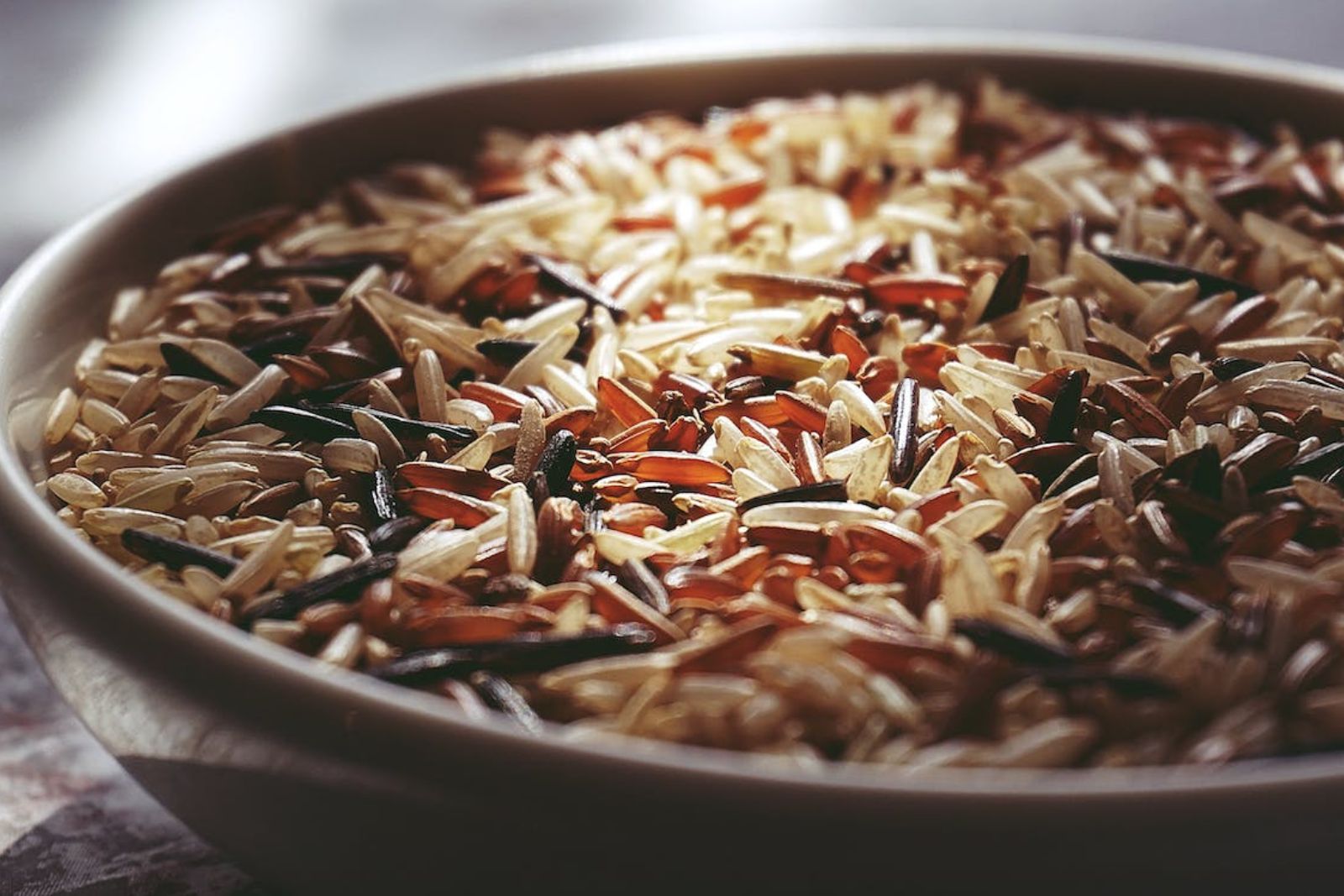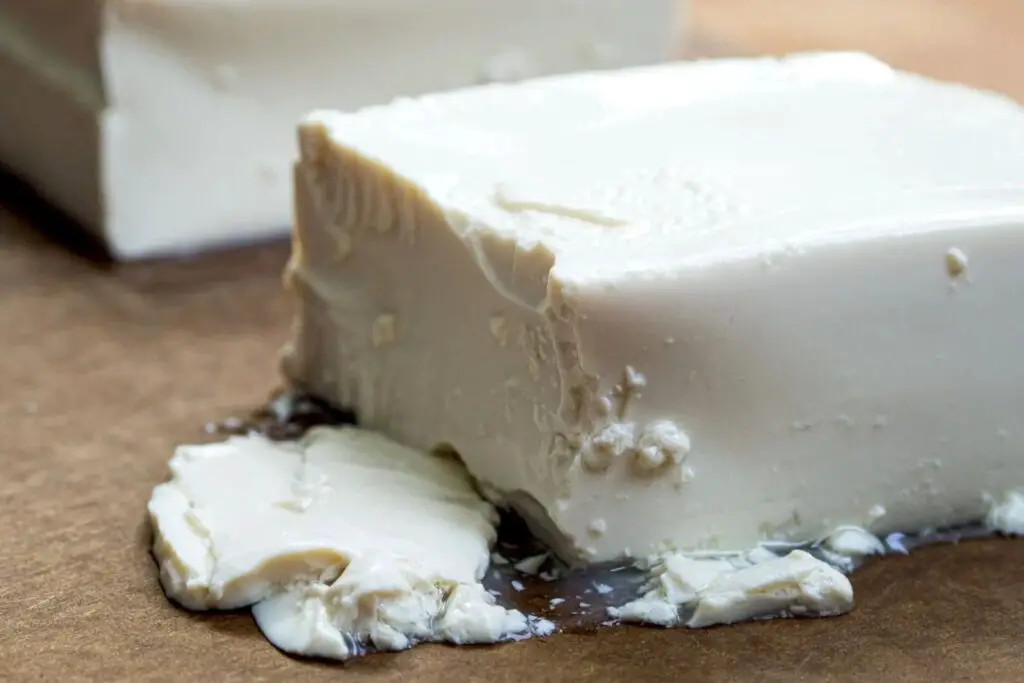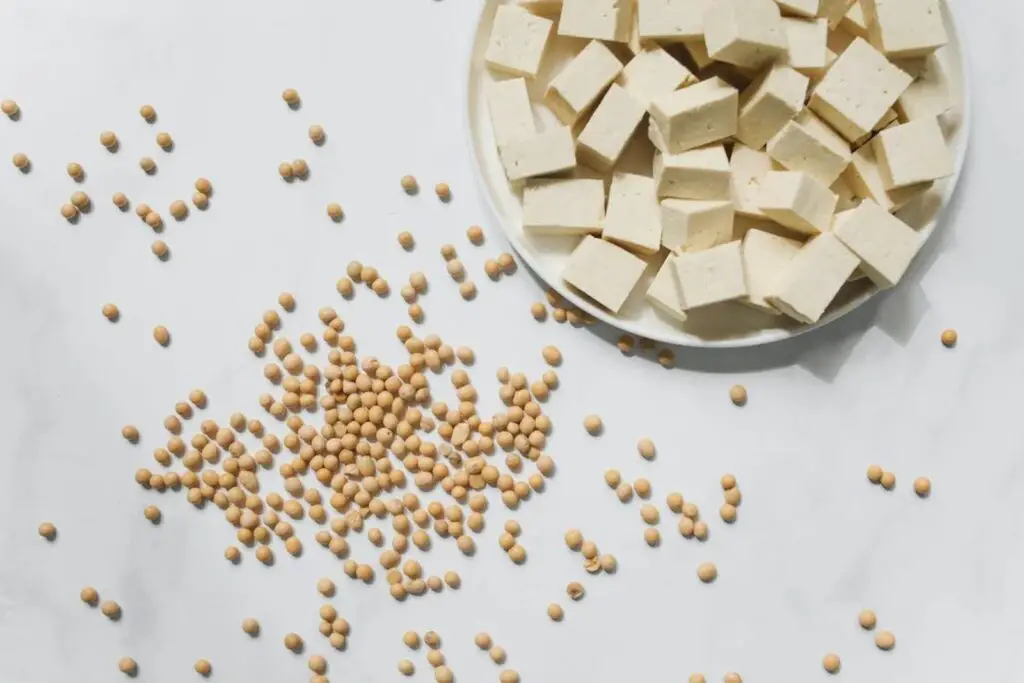
Brown rice is a type of whole grain rice that is minimally processed, retaining its outer bran layer and germ. It is a healthier alternative to white rice because it undergoes less refining and retains more of its natural nutrients. Brown rice has a nutty flavor and a slightly chewy texture. Freezing brown rice is an excellent way to ensure you always have a nutritious staple on hand for quick and easy meals. Whether you’ve cooked too much brown rice or want to prepare meals for the future, freezing it properly will help preserve its texture and flavor.
Here is a step-by-step guide on how to freeze brown rice:
Step 1: Cook the brown rice thoroughly
Cooking brown rice thoroughly is an essential first step before freezing it. Properly cooked brown rice ensures that it retains its texture and flavor when reheated later. Here’s why it’s important to cook brown rice thoroughly:
- Texture: Brown rice should have a slightly chewy texture when cooked properly. This texture adds a pleasant mouthfeel to dishes and prevents the rice from becoming overly soft or mushy. Cooking it until it reaches the desired chewiness ensures that it maintains its integrity during the freezing and reheating processes.
- Consistency: Cooking brown rice thoroughly ensures that each grain is evenly cooked. It allows the rice to absorb enough moisture while retaining its structure. This consistency is crucial for achieving a desirable texture in your frozen brown rice and when reheating it later.
- Flavor development: Thoroughly cooking brown rice helps develop its nutty and slightly earthy flavor. The cooking process allows the grains to absorb the cooking liquid and release starch, contributing to the overall taste profile. By cooking it until it’s fully done, you enhance the flavor of the rice, making it more enjoyable to eat after freezing and reheating.
- Reheating considerations: Brown rice can become softer when reheated, so it’s important not to overcook it during the initial cooking process. By achieving the ideal texture during cooking, you can account for any softening that may occur during reheating, ensuring that the rice remains enjoyable to eat.
To cook brown rice thoroughly, follow the instructions on the package or use your preferred cooking method. Generally, the process involves combining the rice with water or broth, bringing it to a boil, and then reducing the heat to a simmer until the rice is tender. Remember to keep an eye on the cooking time and check for the desired chewiness before proceeding to freeze the rice.
Can I freeze uncooked brown rice?
Yes, you can freeze uncooked brown rice. Freezing uncooked brown rice can be a convenient option for long-term storage. However, it’s important to note that freezing uncooked rice may result in changes in texture and taste upon thawing and cooking, so it’s recommended to consider the potential impact on the final cooked dish before freezing uncooked brown rice.
Step 2: Cool down the brown rice
Cooling down the brown rice completely before freezing is a critical step to ensure food safety and maintain the quality of the rice. Here’s why it’s important to cool the rice down to room temperature:
- Bacterial growth prevention: Warm or hot rice creates an ideal environment for bacterial growth, particularly the spore-forming bacterium called Bacillus cereus. Allowing the rice to cool down helps inhibit the growth of bacteria that can cause foodborne illnesses. When rice is cooked, it retains some moisture, and if it is not cooled properly, bacteria can multiply rapidly, leading to potential health risks.
- Maintaining texture and quality: Cooling the brown rice to room temperature helps preserve its desired texture. If hot rice is immediately placed in the freezer, the rapid temperature change can result in uneven cooling and lead to the formation of ice crystals. These ice crystals can affect the rice’s texture and cause it to become mushy or dry when reheated. Allowing the rice to cool down slowly and evenly helps maintain its integrity and prevents textural changes.
- Preventing condensation: If hot rice is sealed in a container or wrapped for freezing, condensation can occur inside the packaging. This excess moisture can lead to freezer burn or create an unfavorable environment for the rice during freezing. Cooling the rice down allows any steam or moisture to dissipate, reducing the risk of condensation and maintaining the quality of the rice during freezing.
To cool down the brown rice, transfer it to a large bowl or a shallow pan. This increases the surface area, facilitating faster cooling. You can also gently fluff the rice with a fork to release heat and promote even cooling. Avoid leaving the rice at room temperature for an extended period, as it can enter the temperature danger zone (40°F to 140°F or 4°C to 60°C), where bacteria can multiply rapidly. Once the rice has cooled down to room temperature, you can proceed with the freezing process.
Step 3: Portion the brown rice
Portioning the brown rice before freezing gives you more flexibility and convenience when it comes to using it later. Here’s why it’s beneficial to divide the rice into appropriate portions:
- Easy thawing and portion control: By dividing the brown rice into individual or smaller portions, you can thaw only the amount you need for a particular meal, rather than defrosting the entire batch. This makes it more convenient to use the frozen rice and reduces food waste. Portioning also helps with portion control, ensuring that you thaw and consume an appropriate amount without excessive leftovers.
- Quick and efficient reheating: Smaller portions of brown rice thaw and reheat more quickly and evenly than a large frozen block. This allows you to prepare a meal faster when you’re ready to use the rice. It also ensures that the rice reheats uniformly, maintaining its texture and taste throughout.
- Versatile serving options: Portioned brown rice provides flexibility in using it for various dishes. Whether you need a side dish, a base for stir-fries, or an ingredient for casseroles and salads, having individual portions allows you to adapt the rice to different recipes and serving sizes.
- Reduced risk of food waste: Dividing the brown rice into smaller portions helps prevent excessive leftovers that might go to waste. Instead of thawing more rice than needed, you can portion it based on your typical consumption or desired serving sizes, reducing the likelihood of unused rice being discarded.
When deciding on portion sizes, consider your typical serving sizes or the amount you usually use in a single meal. You can use small resealable freezer bags, individual containers, or even silicone molds to create portioned servings. Make sure to label each portion with the date and quantity for easy identification.
Step 4: Wrap the brown rice
Wrapping the portions of brown rice tightly before freezing is essential to protect the rice from freezer burn and maintain its quality. Here’s why proper wrapping is important:
- Freezer burn prevention: Freezer burn occurs when food is exposed to air in the freezer, leading to moisture loss and the formation of ice crystals. These ice crystals can cause dry and discolored patches on the rice, affecting its texture and taste. Wrapping the brown rice tightly in plastic wrap creates a barrier that helps prevent air from reaching the rice, reducing the risk of freezer burn.
- Moisture protection: Excess moisture in the freezer can cause ice crystals to form on the rice, impacting its texture and flavor. Proper wrapping helps keep out any excess moisture and maintain the rice’s desired consistency. By tightly sealing the rice, you create a protective layer that helps preserve its natural moisture content.
- Packaging options: Plastic wrap is a convenient option for wrapping individual portions of brown rice. Ensure that you cover the rice completely, leaving no exposed areas. Alternatively, you can use resealable freezer bags or airtight containers, which provide added protection against air and moisture. These options are particularly useful when freezing larger quantities of brown rice or when you prefer a more secure and reusable packaging method.
To wrap the brown rice, place a portion in the center of a sheet of plastic wrap or insert it into a resealable freezer bag. Fold the plastic wrap tightly around the rice, ensuring there are no gaps or exposed areas. Squeeze out any excess air from the bag before sealing it. If using airtight containers, make sure they are sealed tightly to prevent air or moisture from entering.
Step 5: Label and date the package
Labeling and dating the packages of frozen brown rice is a crucial step for organization and maintaining food safety. Here’s why it’s important to label and date the packages:
- Storage time tracking: By labeling each package with the date of freezing, you can easily track the storage time of the brown rice. It helps you keep a record of how long the rice has been in the freezer, allowing you to prioritize the older packages and use them first. This practice ensures that the brown rice is consumed within the recommended storage duration for optimal quality and safety.
- Quality control: Brown rice, like any other food item, has a limited storage life. Over time, the quality can deteriorate, affecting its taste, texture, and nutritional value. By labeling and dating the packages, you can keep track of how long the rice has been frozen and make informed decisions on when to use it. This practice helps maintain the best possible quality of the brown rice, ensuring an enjoyable eating experience.
- Preventing food waste: Accurate labeling and dating of the packages help prevent unnecessary food waste. By using the oldest brown rice first, you reduce the risk of forgetting about packages that have been stored for too long and potentially becoming unsuitable for consumption. This practice promotes a mindful approach to food storage and helps minimize food waste.
- Inventory management: Labeling and dating the packages of frozen brown rice contribute to effective freezer inventory management. Clear and visible labeling allows you to quickly identify the contents and easily plan meals based on what you have available. It helps you stay organized and reduces the chances of losing track of the stored rice.
To label the packages, use a permanent marker or labels that adhere well to the plastic wrap or containers. Write the date of freezing in a clear and visible manner. Include any additional information you find helpful, such as portion sizes or any special notes. It’s recommended to place the label or write directly on the package to ensure visibility and avoid confusion.
Step 6: Freeze the brown rice
Freezing the wrapped portions or containers of brown rice properly is the final step in the process. Here’s why it’s important to freeze the brown rice correctly:
- Long-term preservation: Freezing is an effective method for long-term food preservation. By placing the wrapped brown rice in the freezer, you slow down the growth of bacteria, yeast, and molds, which helps maintain its quality and safety for an extended period. Freezing prevents spoilage and allows you to enjoy the brown rice at a later time.
- Preventing clumping: Placing the wrapped brown rice portions or containers in a flat position helps prevent the rice from clumping together. This allows for easier portioning when thawing and reheating. It also ensures that each portion thaws and reheats evenly, maintaining the desired texture and preventing the rice from becoming mushy.
- Maximizing freezer space: Arranging the wrapped brown rice portions or containers in a flat position maximizes the use of freezer space. This allows you to store more portions while making it easier to stack or organize them. By utilizing the available freezer space efficiently, you can accommodate a larger quantity of brown rice for future use.
- Proper air circulation: Leaving enough space between packages allows for proper air circulation within the freezer. Adequate air circulation helps maintain a consistent freezer temperature and prevents the formation of ice crystals. This contributes to better preservation of the brown rice’s texture, flavor, and overall quality.
- Recommended storage duration: While frozen brown rice can remain safe to eat indefinitely, it is best to consume it within a recommended storage duration for the best quality. It is generally recommended to store brown rice in the freezer for up to six months. Beyond this timeframe, the rice may begin to lose its quality, flavor, and nutritional value. Adhering to the recommended storage duration helps ensure that you enjoy the brown rice at its peak quality.
When placing the wrapped brown rice portions or containers in the freezer, try to create a flat and organized arrangement. Leave enough space between packages for proper air circulation. If you have multiple portions, you can stack them neatly, separating each layer with a sheet of parchment paper or a freezer-safe barrier. This helps maintain the integrity of the individual portions and makes it easier to access them later.
Step 7: Thaw and reheat as needed
Thawing and reheating the frozen brown rice properly is crucial to ensure its safe consumption and maintain its quality. Here’s why it’s important to follow the appropriate thawing and reheating methods:
- Safe consumption: Thawing the brown rice properly helps ensure its safety. Slow thawing in the refrigerator overnight is the recommended method as it allows the rice to thaw at a controlled temperature. This minimizes the risk of bacterial growth and prevents the rice from entering the temperature danger zone (40°F to 140°F or 4°C to 60°C), where bacteria can multiply rapidly. Thawing rice at room temperature or using warm water is not advisable as it can lead to uneven thawing and potentially unsafe conditions.
- Texture preservation: Thawing the brown rice properly helps maintain its desired texture. Gradual thawing in the refrigerator allows the rice to thaw evenly without excessive moisture loss or textural changes. This helps retain the characteristic chewiness of brown rice. Quick thawing methods like the defrost function on the microwave can be used if you need the rice quickly, but it’s important to use the rice immediately after thawing to minimize any potential textural changes.
- Reheating options: Reheating the thawed brown rice gives it a fresh and warm taste. There are multiple reheating options available based on your preference and convenience. Steaming the thawed rice in a steamer basket or using a rice cooker helps retain its moisture and fluffiness. Microwaving the rice in a microwave-safe dish with a splash of water can quickly reheat it, but it may result in a slightly drier texture. Stir-frying the thawed rice in a pan with a little oil or water can add some additional flavor and make it suitable for dishes like fried rice.
- Avoiding multiple thawing and refreezing cycles: It is recommended to thaw only the amount of brown rice you need for a particular meal to prevent unnecessary thawing and refreezing cycles. Repeated thawing and refreezing can lead to a loss in quality and increase the risk of bacterial growth. If you have leftovers after thawing, it’s best to refrigerate them and use them within a few days rather than refreezing them.
When you’re ready to enjoy the frozen brown rice, remove the desired portion from the freezer and thaw it in the refrigerator overnight. If you need to thaw it quickly, you can use the defrost function on your microwave, following the manufacturer’s instructions. Once thawed, you can choose a suitable reheating method such as steaming, microwaving, or stir-frying, depending on your preference and the intended use of the rice.
Other related questions
How long can brown rice last in the freezer?
Cooked brown rice can last in the freezer for up to 6 months while still maintaining its quality. However, it is generally recommended to consume it within the first 3 to 4 months for the best taste and texture. Freezing cooked brown rice helps extend its shelf life and provides a convenient option for meal planning and reducing food waste.
Can I refreeze brown rice?
Refreezing brown rice is not recommended as it can negatively affect the quality and safety of the rice. When you thaw and then refreeze brown rice, you subject it to multiple temperature changes, which can lead to potential bacterial growth and loss of texture and flavor. It is best to thaw only the amount of brown rice needed for a meal to minimize waste and maintain the best quality.
How do I know if the brown rice has gone bad after being frozen?
To determine if frozen brown rice has gone bad, you should rely on visual and sensory cues. Look for any signs of mold, discoloration, or unusual odor. If the rice appears off in any way or has a rancid smell, it is likely spoiled and should be discarded. When in doubt, it is safer to err on the side of caution and dispose of the rice to avoid the risk of foodborne illness.
Is it safe to freeze brown rice that has been seasoned or mixed with other ingredients?
Yes, you can freeze seasoned or mixed brown rice. However, keep in mind that some ingredients, such as certain vegetables or sauces, may have a different texture after freezing and thawing. Consider adding those ingredients fresh after reheating the brown rice.
Can I freeze leftover brown rice from a restaurant or takeout?
Yes, you can freeze leftover brown rice from a restaurant or takeout. However, keep in mind that the quality and taste may vary upon thawing and reheating. It’s best to freeze the leftovers as soon as possible to maintain their freshness.








